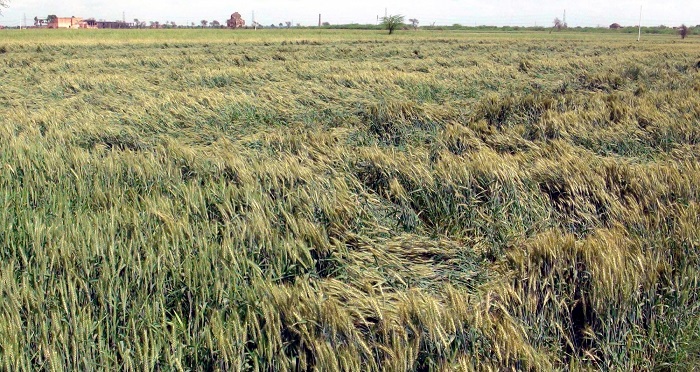New Delhi, For the sixth year in a row, India is likely to witness “below normal” monsoon with expectations of erratic rainfall induced by climate change, which may aggravate farm distress, particularly in the drought-ridden regions.
In 2019, monsoon will be 93 per cent of the Long Period Average (LPA) owing to developing El Nino in the Pacific Ocean, said private weather forecaster Skymet, adding that the precipitation pattern has changed rapidly in the past few years.
Farm productivity in Vidarbha and Marathwada regions of Maharashtra, parts of Karnataka, Telangana, Madhya Pradesh, Bihar and Jharkhand would take a hit owing to less rainfall and its uneven distribution.
“Soybean, groundnuts and pulses are the major rain-fed crops that will be affected if central India is rain deficient this time. In Bihar, the pressure will be on paddy. It can also affect potato production in West Bengal during the rabi season,” said T. Nandkumar, former Union Agriculture Secretary.
The overall foodgrain production in the country is likely to be 281.37 million tonnes in 2018-19, according to government estimates.
Farmers in the country, especially small and marginal farmers, have been witnessing crop loss due to erratic rainfall and drought-like situation.
They have also been complaining about lower returns due to increase in cultivation costs, which have led to several farm protests in the country.
This year, Maharashtra has already declared drought in 151 talukas with the situation being severe in 112 of them, while nearly 4,000 villages in Madhya Pradesh are staring at acute drought.
Tamil Nadu, Andhra Pradesh and Telangana are also among the states that are worst hit.
S.K. Sarkar, Senior Director at The Energy and Resources Institute (TERI), a not-for-profit organisation, said that crops are prone to damages in extreme rainfall variability as they will be affected both times — when there is drought-like situation and when they receive excessive rainfall.
The extreme rainfall variability causes rains and droughts to happen in shorter period, thus having a big impact on the cropping pattern, he said.
“Variability in rains is because of climate change. Now the intensity has increased and it is for a short period. You may get four months’ rain in just two months and there will not be any rain in the the remaining months. So you get rainfall and drought in a shorter span of time,” Sarkar said.
Mahesh Palawat, Vice President (meteorology and climate change) at Skymet, said the frequency of drought years has increased in the last 10-15 years.
“Earlier, there would be drought in one or two years every decade. However, the number has increased now. In the past five years, we have seen every monsoon to be below 100 per cent besides the two subsequent droughts,” Palawat said.
He said the sowing season is likely to be delayed this year due to lower rainfall expected in June.
“The pattern of rainfall has changed. Although its amount has been the same, there is no uniformity in precipitation,” Palawat said.
Sarkar said that crops needed water at certain period of cultivation. “If it happens beyond that time, it will have a big impact on the cropping pattern,” he said.
The variability in precipitation was witnessed in the past couple of years with higher intensity of rains in Mumbai, Chennai and Kerala.
“There will be more floods and more droughts as climate change predictions say there will be variability of precipitation and variability in extreme events owing to increase in temperature by 1.5-2 degree Celsius,” Sarkar said.
Palawat and Sarkar said that there was an immediate need to take adaptation measures, such as creating facilities to restore water and recharge the groundwater table using technological solutions.










